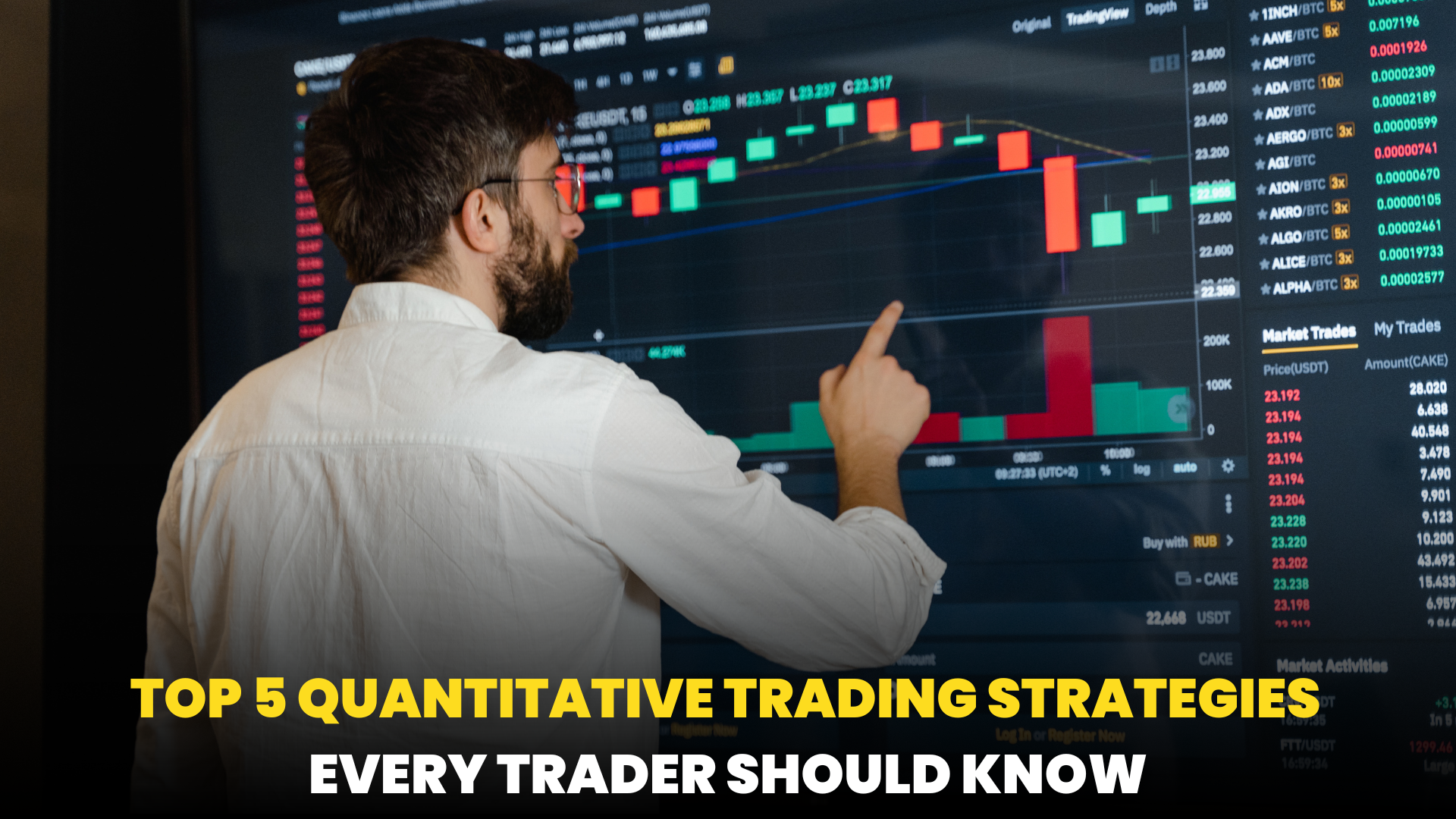
Top 5 Quantitative Trading Strategies Every Trader Should Know
Quantitative trading leverages data, statistics, and algorithms to make objective trading decisions. Instead of relying on gut feelings, traders use mathematical models to identify patterns and exploit market inefficiencies. These strategies are used across stocks, forex, options, and cryptocurrencies, making them essential for any serious trader.
Here are five powerful quantitative trading strategies explained in simple terms with real-world relevance.
1. Mean Reversion: Betting on Price Corrections :-
-
•Identify assets that have moved significantly away from their historical average.•Use Bollinger Bands or Moving Averages to detect overbought/oversold conditions.•Buy when the price is below the mean & sell when it's above.
-
•Some stocks are cheap for a reason & may continue falling.•Markets don’t always revert quickly.
2. Momentum Trading: Riding the Trend :-
-
•Identify high-performing stocks moving sharply in one direction.•Use RSI & Moving Averages (50-day, 200-day) to confirm trends.•Enter trades early & exit when momentum slows.
-
•Trends can reverse suddenly.•Works best in trending markets but struggles in sideways markets.
3. Statistical Arbitrage (Stat Arb): Exploiting Market Inefficiencies :-
-
•Identify two stocks that historically move together (e.g., Tata Steel & JSW Steel).•Buy the undervalued stock & short the overvalued stock.•Close positions when prices realign.
-
•Correlations can break down unexpectedly.•Requires fast execution and automation.
4. High-Frequency Trading (HFT): Speed is King :-
-
•Uses colocation (placing servers close to stock exchanges) to reduce latency.•Trades happen in fractions of a second, making thousands of trades daily.•Capitalizes on tiny price differences across exchanges.
-
•Expensive infrastructure needed.•Regulatory scrutiny over unfair advantages.
5. Machine Learning & AI-Based Trading: The Future of Trading :-
-
•Scans financial data, social media, & news to predict market trends.•Uses neural networks & deep learning for complex analysis.•Improves performance over time by learning from past trades.
-
•AI requires huge datasets & constant fine-tuning.•Unpredictable events (e.g., COVID-19) can disrupt AI predictions.
Final Thoughts – Leverage These Strategies with NeoTrader :-
-
•Mean Reversion – Trade price corrections.•Momentum Trading – Ride trends for big profits.•Stat Arb – Exploit correlated stocks for gains.•HFT – Use speed & automation to trade faster.•AI Trading – Let machine learning find hidden opportunities.
-
•AI-powered trade recommendations•Pre-built quantitative trading strategies•Real-time alerts & precise entry/exit points
Join our free webinar & discover how NeoTrader.in can help you master quantitative trading!
Register Now!









